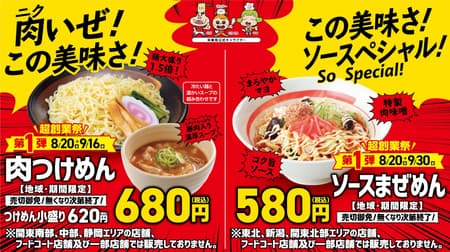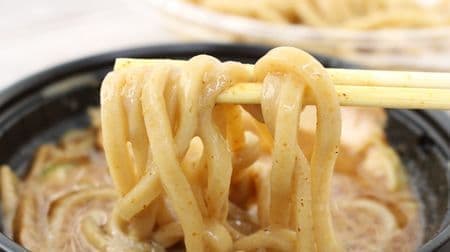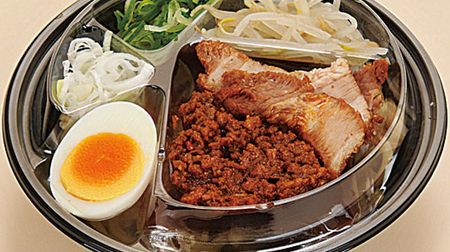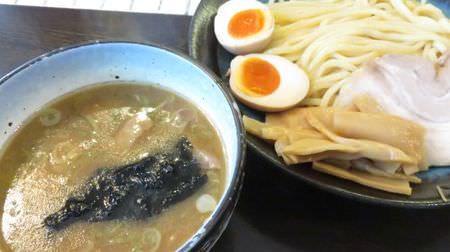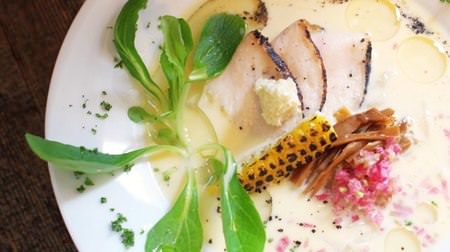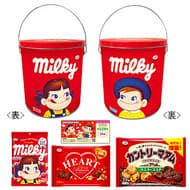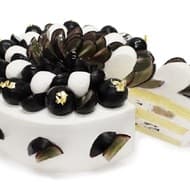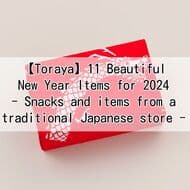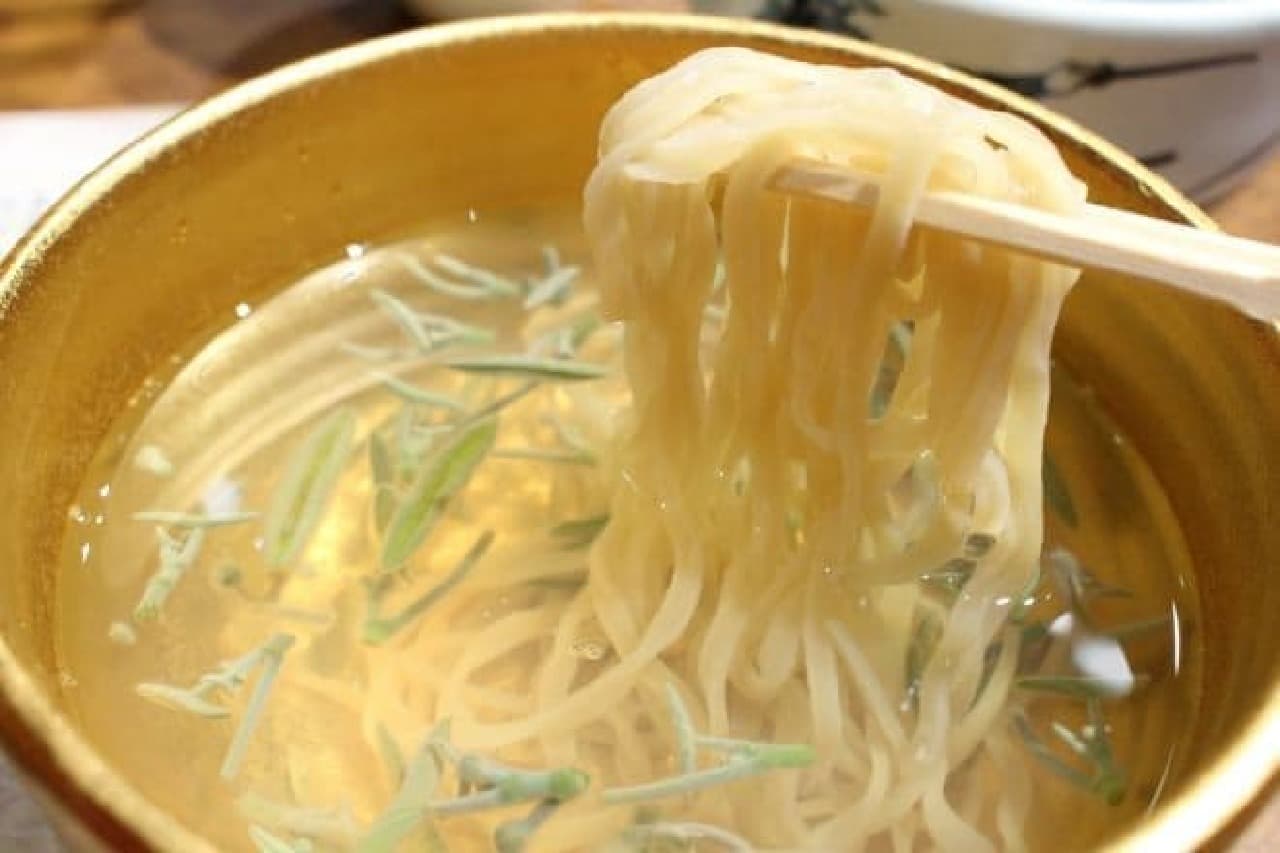
"If you're not thirsty, don't drink water and wait." --When I asked for a tasting as usual, I was informed. That person is said to "come in quickly".
"Kinno Musashi" is a 20th anniversary commemorative project of the popular ramen shop, Menya Musashi. Special ramen is served once a month at each store over the course of a year. Finally, in the second half of the game, the 7th edition is Ueno Menya Musashi's "Water Tsukemen". This is the first tsukemen in the series.
The theme is literally "water". It is a cup that is particular about "water", which accounts for 70% of the total.
The protagonist, "water," was drawn from "Wakutamaike" (Shizuoka Prefecture), which is one of the 100 best waters. It is said that this water is used in all processes, not only for noodles and soup, but also for boiling and washing noodles.

If you want to summarize the taste in one word, is it "clear tsukemen" ? The scene of Wakutamaike goes around my mind (I only see the pictures), and I even get the illusion of drinking water on the spot.
● Noodles have a water content of 50%
The noodles are made from Hokkaido wheat "Haruyo Koi" and spring water, and are finished with a water content (the amount of water added when making) of 50%.Normally, the water content of noodles is about 35% for thick, thick noodles. This time, when the water content is high, it is difficult to make it with a general manufacturing method, so it seems that it is made by a method that is almost handmade.
Put the noodles in a gold bowl with lotus leaves and add a little salt to the spring water. First, let's sip without soaking in the soup. The "transparent" mouthfeel of the spring is supported by the soft flavor of spring and love, and it blends into your body. It's chewy but not too soft, and it's chewy. I like this texture.
I felt that I understood the heart that clean water is indispensable for delicious soba. I've also eaten Koi noodles in spring, but when the water changes, the flavor is so different! I was surprised.

● Transparent and delicate "soup"
The other thing that the store manager had a hard time other than "going to Shizuoka to get water" was making soup.Wakutamaike is so transparent that it is indistinguishable from aquatic plants and algae on the surface of the water and those on the bottom. I wanted to express that transparency in appearance, but it was extremely difficult.
I chose abalone to produce "umami". However, if you just boil it and take the soup, it will become cloudy. Therefore, by drying it overnight and then cooking it carefully, a clear soup with good taste and saltiness was completed.
The water shield floating on the "water surface" is like the aquatic plants of Wakutamaike. It is also a smooth, plump, and textured accent.
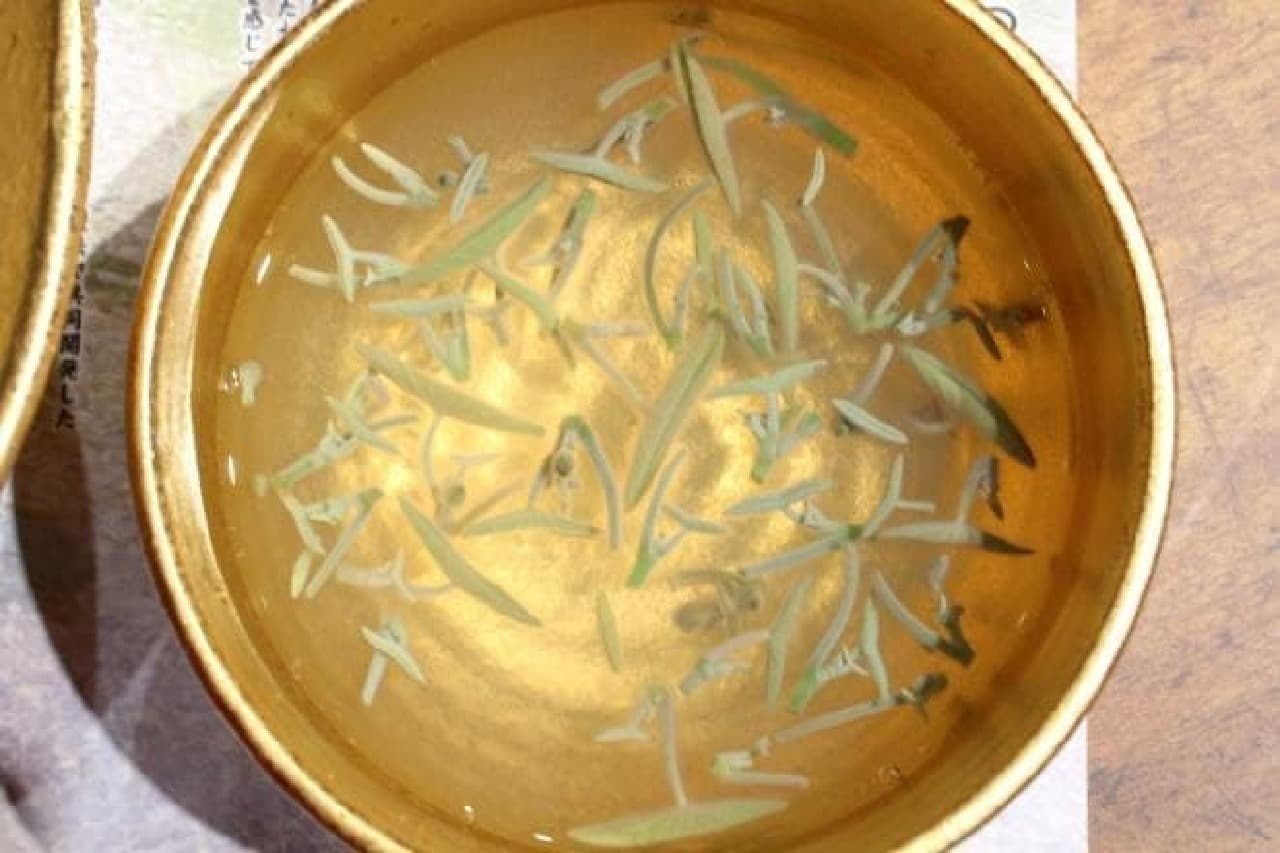
When you put the noodles on it, the taste is so clear that you can't help but mutter "Oh, water ..."! Furthermore, if you entangle wasabi grown in the same clean water of Shizuoka as the spring water, you will even feel as if you are eating the magnificent nature as it is.
Well, I've used a little spiritual expression, but I can feel the "spring" as a whole. Only water, but water. I was reminded of the power of water as to whether it would change so much if I pursued it.
Do not put wasabi directly in the soup. Let's use another vessel that is handed over. I want you to feel the difference in taste between ants and pears.
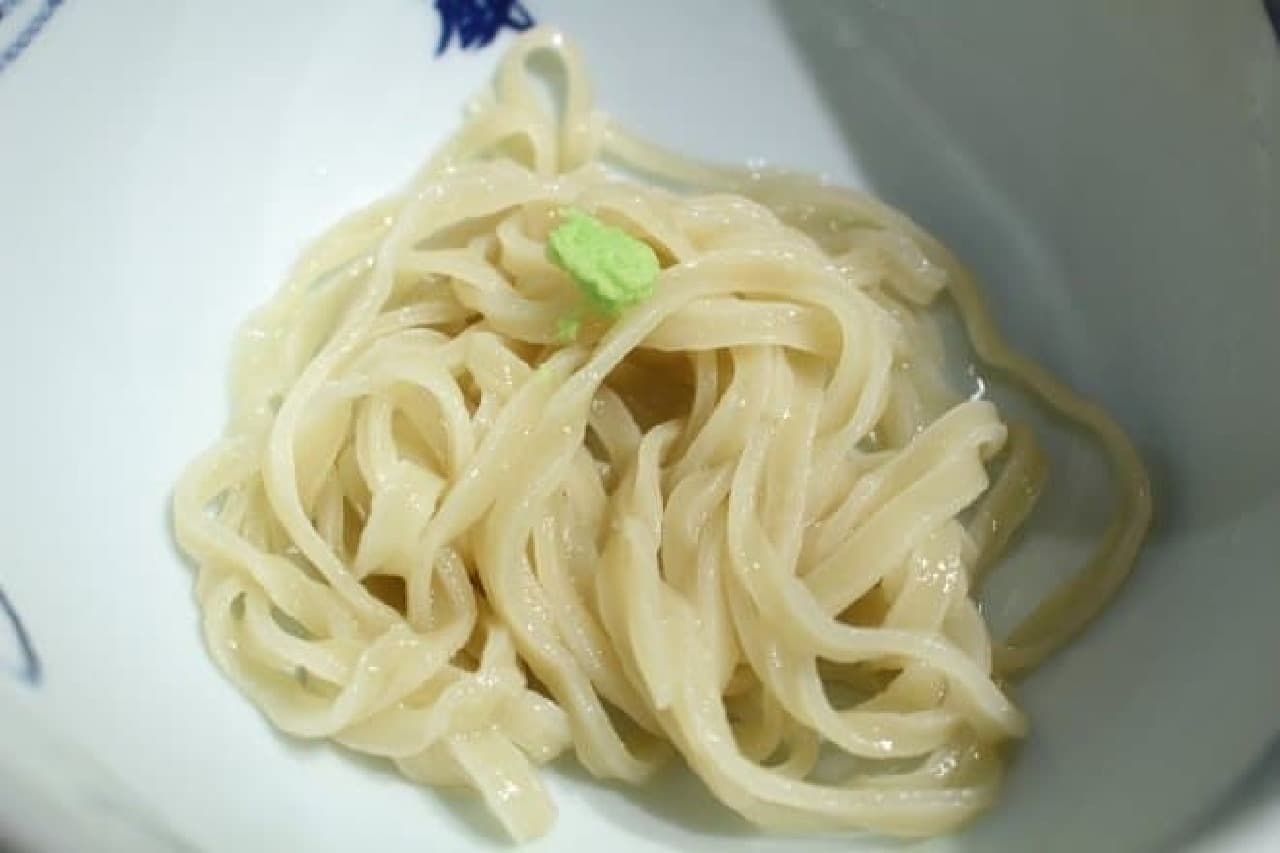
● Unique soup split
Now, let's have a shime soup split. In this case, add the water from the noodle bowl to the soup. It is recommended to add one cup at a time with Renge and stop once with about two cups. The flavor is so delicate.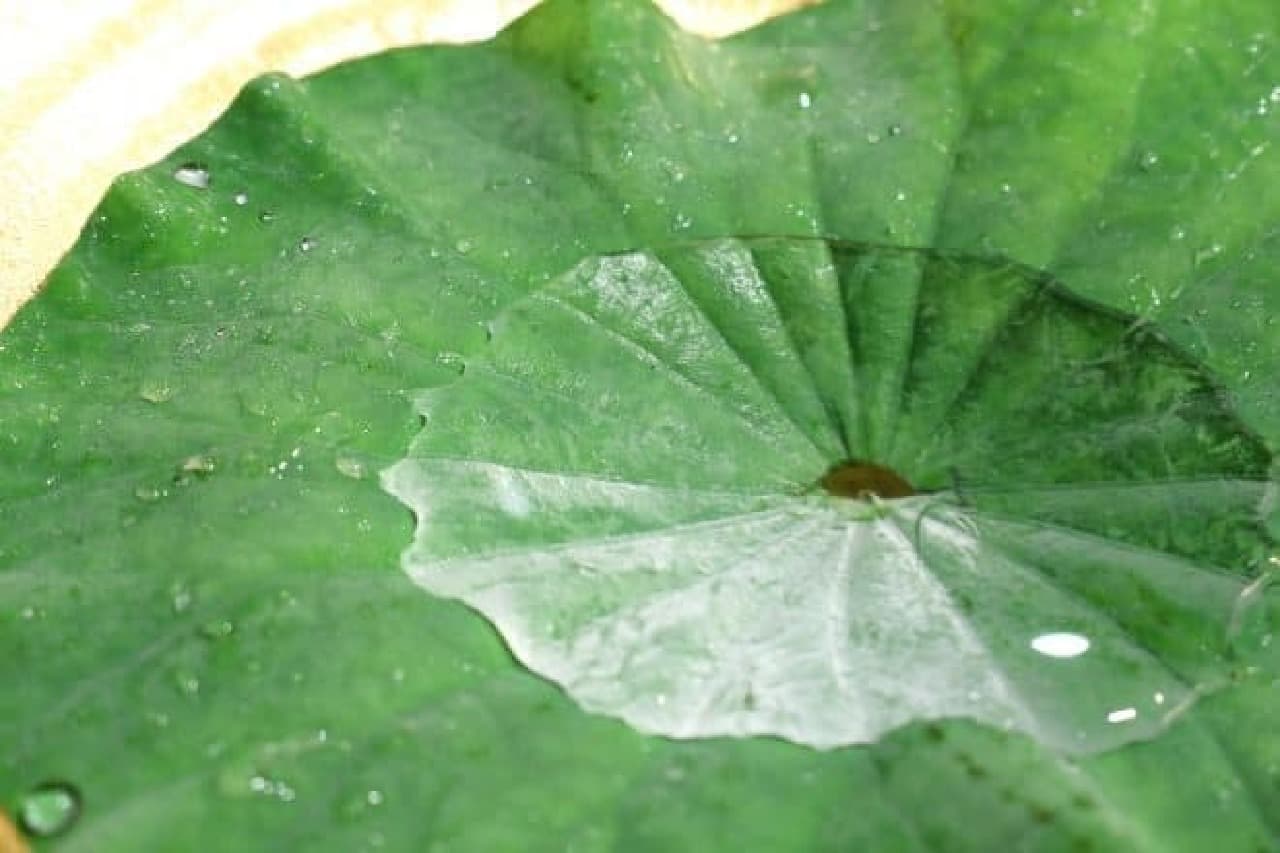
And tea is served to the real shime. Shizuoka tea leaves with gyokuro added are "drained" with spring water. After a delicate meal, have a delicate drink. What a smart consideration.

● To Shizuoka today ...
The amount of water used in this project is 120 liters a day! It seems that the president himself went to Shizuoka from the morning today (July 27).

"Water Tsukemen" will be served from July 28th to July 31st. The price is 2,000 yen, limited to 10 meals a day.
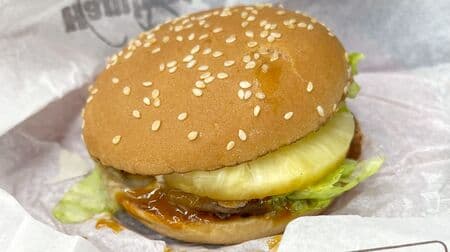
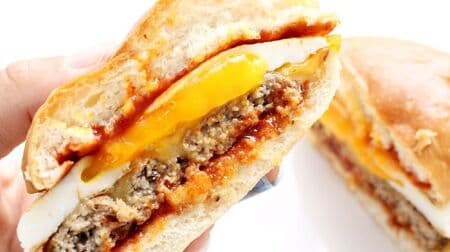


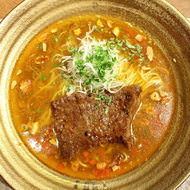

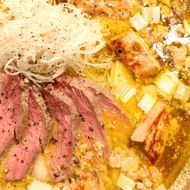
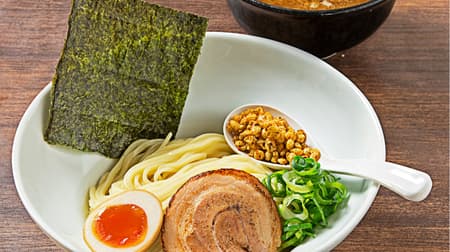

![[Tasting] 7-ELEVEN "Seafood pork bone soy sauce tsukemen" Cospa is good? Thick soup is entwined with chewy noodles!](https://image.entabe.jp/upload/articles/40099/198e0e045ad3ec83a9950e8d9328fbdb_special.jpg)
